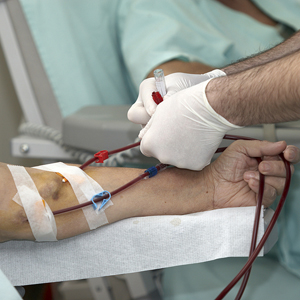Fluid Management while on Dialysis
Managing fluid intake is crucial for individuals on dialysis, as their kidneys are no longer able to filter out excess fluid effectively. The amount of fluid you should consume can vary based on several factors, including the type of dialysis treatment you’re undergoing (hemodialysis or peritoneal dialysis), your overall health, and the residual kidney function you might still have.
For those undergoing in-center hemodialysis, the fluid restrictions are usually stricter because the dialysis process itself doesn’t fully remove all the extra fluid that builds up between treatments. People on this type of dialysis typically need to closely monitor their fluid intake to avoid complications like swelling, high blood pressure, and heart strain.
On the other hand, home dialysis (such as home hemodialysis or peritoneal dialysis) may offer more flexibility with fluid intake because people on home dialysis generally have more frequent or longer sessions that can better manage fluid removal.

The buildup of extra fluid can cause:
- Headaches and low energy: Fluid overload can increase pressure in your body, causing discomfort, headaches, and a general feeling of being unwell or fatigued.
- Edema (swelling): Too much fluid can accumulate in your tissues, leading to visible swelling, especially in the face, hands, and feet.
- Breathing issues: Fluid can accumulate in the lungs, making it difficult to breathe and potentially causing shortness of breath.
- Heart damage: Excess fluid can place added strain on your heart, leading to an increase in blood volume, which can stretch the heart and weaken it over time.
- High blood pressure: When your body retains extra fluid, your blood pressure can increase, which may heighten the risk of heart disease and stroke.
Here are thirst management tips specifically for dialysis patients:
- Mouthwash: Rinsing your mouth with mouthwash can freshen your mouth and reduce the sensation of thirst.
- Wait it out: If you feel a fluid craving, wait for sometime and thirst will pass if you give it a moment or two.
- Eat cold or frozen fruit: Enjoy pieces of cold or frozen fruit like grapes, strawberries, or blueberries to help satisfy thirst without consuming excess fluid.
- Drink from small cups or glasses: Use smaller containers to control your intake. It can help you monitor and pace your drinking more easily.
- Stay cool in hot weather: Use a misting fan and wear breathable, light clothing to keep your body cool during warmer months, which can help reduce thirst.
- Sugar-free options: Suck on sugar-free hard candy or chew sugar-free gum to distract from thirst without adding extra calories or sugar.
- Avoid “fluid traps”: Be mindful of situations that may tempt you to drink out of habit or boredom, like watching TV or during social gatherings.
- Freeze your beverage: Freeze your favorite drink in a bottle or container, then sip as it slowly melts, giving you hydration without drinking too quickly or too much at once.















